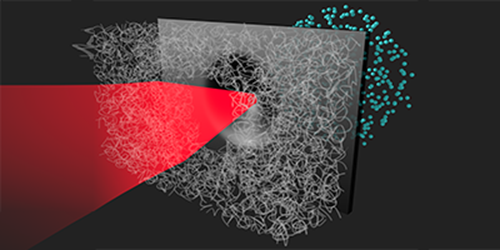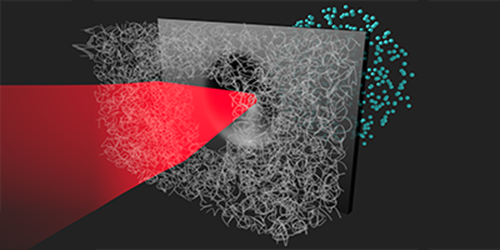Bringing Ions up to Speed
Compact laser-based devices could one day replace the large-scale ion accelerators used for cancer treatment or nuclear physics experiments. But demonstrated schemes, in which laser light accelerates ions in a metal film, are far from achieving the energies and beam quality of conventional accelerators. Now, a team of researchers led by Jörg Schreiber at the Ludwig Maximilian University of Munich has shown they can boost the energy of ions by using laser pulses that have been shaped by their propagation through a thin film containing carbon nanotubes.
Laser acceleration typically involves irradiating a few-micrometer-thick foil with intense laser pulses. These pulses generate an electron plasma in the foil, which creates an electric field that accelerates ions stripped from the sample. According to calculations, the ions’ energy could be boosted by using pulses with a steep (few-femtosecond) rising edge. Such pulses would allow an efficient form of acceleration that is driven by radiation pressure, but they are difficult to generate experimentally.
Schreiber and his colleagues achieved this efficient acceleration using a target made of two foils. The first, made of a foam containing carbon nanotubes, is used to prepare optimally shaped pulses. These pulses then drive ion acceleration in the second foil, a 10-nanometer-thick layer of diamondlike carbon. Using femtosecond pulses from the Astra Gemini laser at Rutherford Appleton Laboratory, they found that nanotube foams with optimal thicknesses increased the maximum energy of accelerated carbon ions by approximately a factor of 3, from 80 to 240 mega-electron-volts (MeV), and that of protons by a factor of 1.5, from 10 to 15 MeV. The high carbon-ion energies in particular might enable the first medical applications of laser-driven accelerators.
This research is published in Physical Review Letters.
–Matteo Rini





